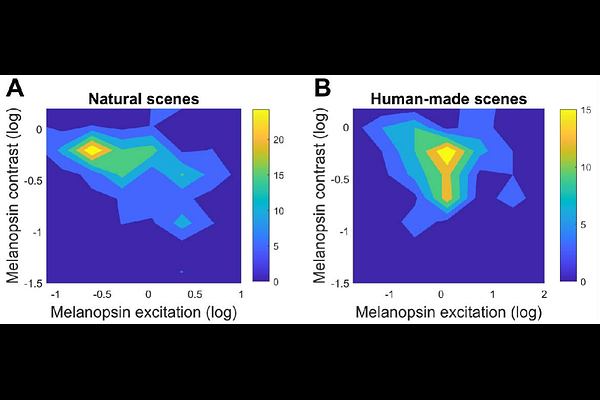Melanopsin-mediated signals in natural and human-made environments

Melanopsin-mediated signals in natural and human-made environments
Barrionuevo, P. A.; Diaz Barrancas, F.
AbstractMelanopsin-expressing intrinsically photosensitive retinal ganglion cells (ipRGCs) play a critical role in regulating physiological and behavioral responses to light. However, little is known about how melanopsin and ipRGC signals are shaped by the statistical properties of real-world environments. Here, we analyzed statistics of melanopsin, ipRGC codification of extrinsic and intrinsic photoresponses, and luminance using hyperspectral images of natural and human-made scenes under daylight illumination. The statistics were obtained simulating receptive fields from current knowledge about ipRGCs anatomy and physiology. Our findings reveal that human-made environments exhibit significantly higher melanopsin, luminance, and ipRGC excitations compared to natural environments. In natural scenes, luminance contrasts were higher than melanopsin and ipRGC contrasts across most of the range. Melanopsin contrast was largely independent of excitation, and was significantly reduced for larger receptive fields. Differences between ipRGC codification models suggest an interaction between input weighting and environmental structure. These results indicate that modifications of natural regularities by human-made environments could affect ipRGC-driven physiology in everyday life.